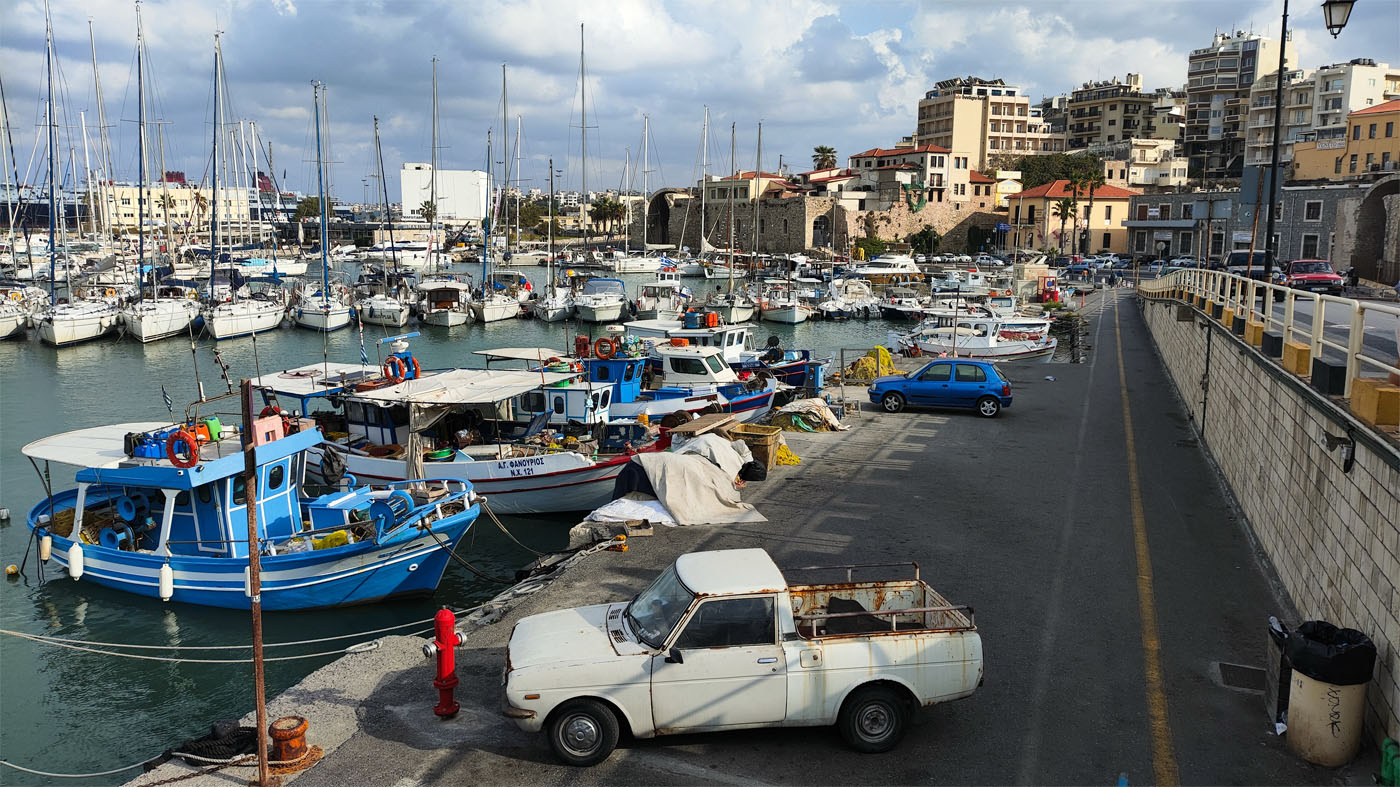
Here’s everything you need to know for a perfect day ashore in Heraklion: how to get from the cruise port to the city center, what sights to see, what local foods to try, and what souvenirs are worth taking home.
The port of Heraklion is located close to the city center. However, walking within the port area is not allowed, so the port authority provides free shuttle buses that take passengers to the main terminal building.
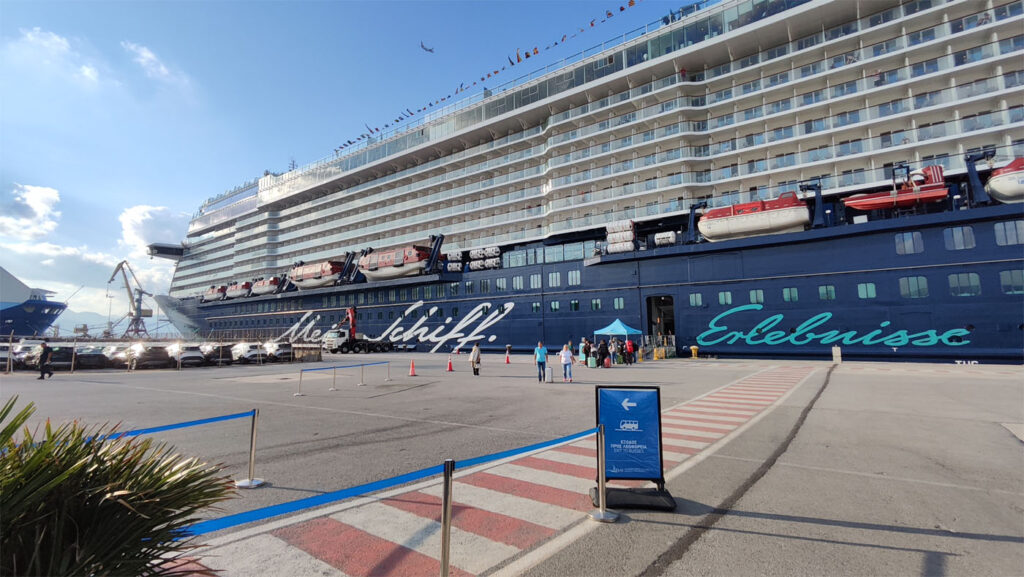
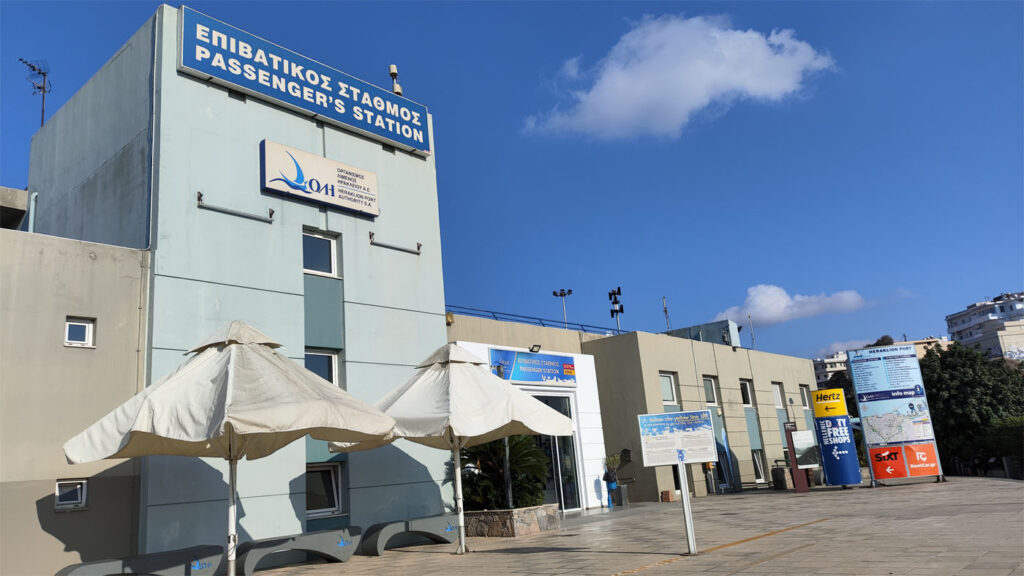
From the terminal, it’s an easy walk to the city center—about 15 to 20 minutes on foot, covering roughly 1.5 kilometers.
|
|
Right outside the port terminal, you’ll find the Hop-On Hop-Off bus waiting. You can ride it all day, and it includes an audio guide in 15 languages. Tickets cost just €15 per person, and you can book them online here. One of the stops is the Knossos Palace, which is located outside the city and requires transportation anyway—so if you’re planning to visit, this bus is a convenient option.
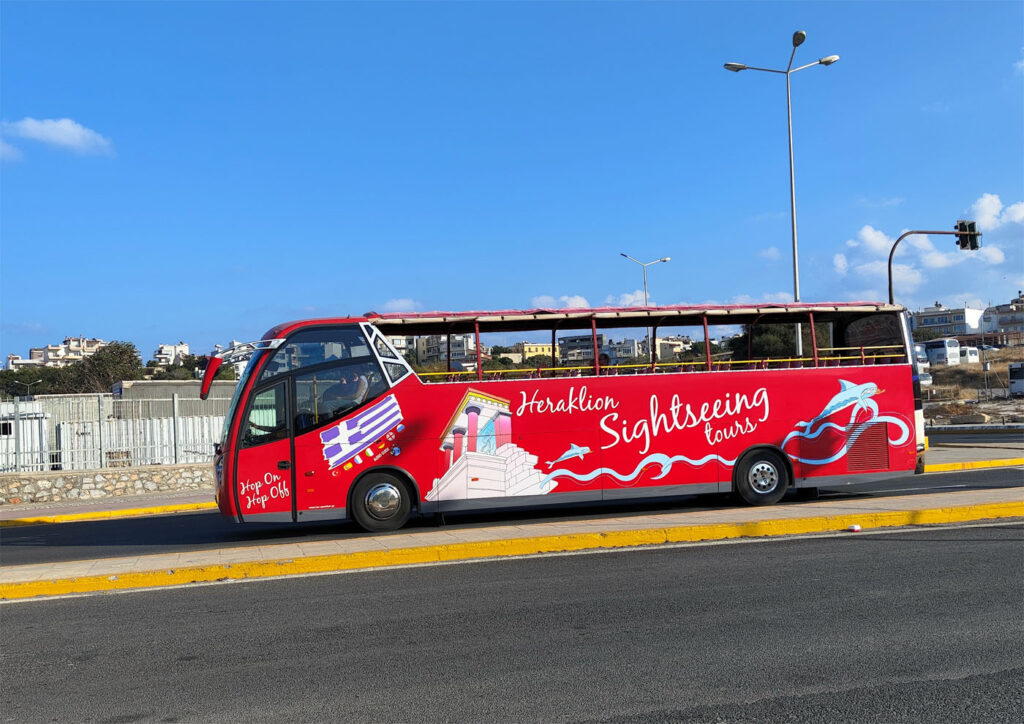
Local taxi drivers also offer fixed-price excursions, with rates clearly displayed (see photo below). The prices are per car (up to 4 passengers), and bargaining is generally not necessary. Taxis wait just outside the terminal building, ready to take you on a personalized tour.
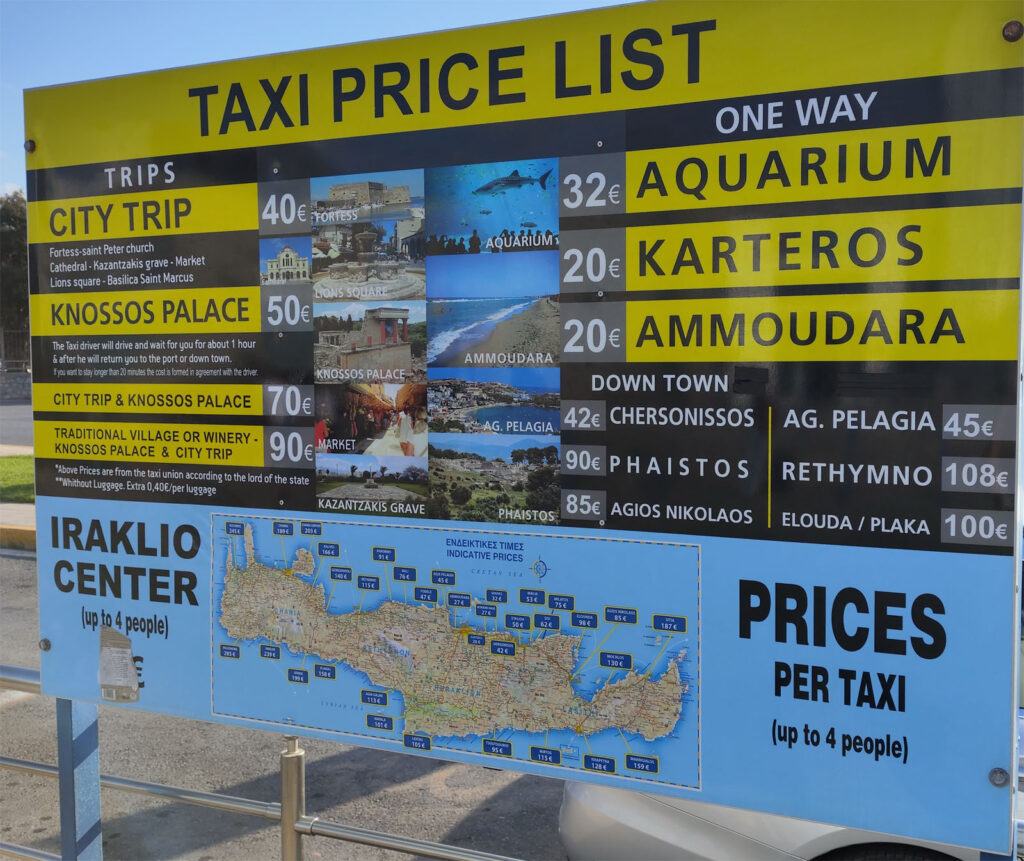
I’ve marked the must-see spots on this interactive map to help you plan your self-guided walk through Heraklion. Click here to open the map in a new tab.
Heraklion’s city center is compact and walkable—you can cover most of the highlights in just a couple of hours. The only major site located outside the city is the Palace of Knossos, which I didn’t manage to visit this time.
Here are the city’s highlights you can easily explore on foot during your cruise stop. All of these locations are pinned on the interactive map, along with photos and tips.
Heraklion’s main cathedral and one of the largest churches in Greece, dedicated to the city’s patron saint. I was especially impressed by its richly decorated interior—definitely worth stepping inside.
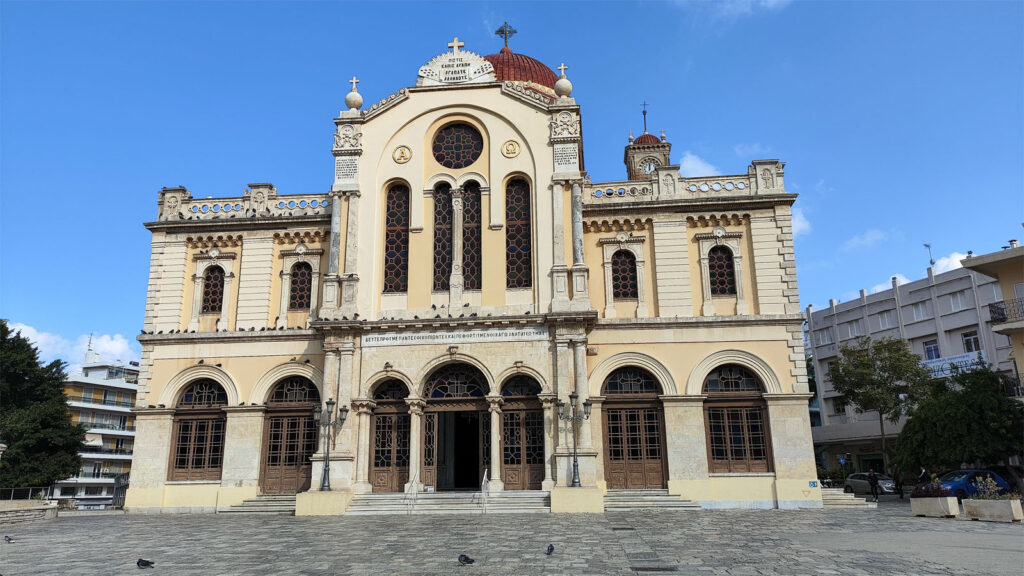
|
|
This massive Venetian fortress guards the entrance to the port and has become a symbol of Heraklion. From the rooftop, you get sweeping views of the sea and city streets.
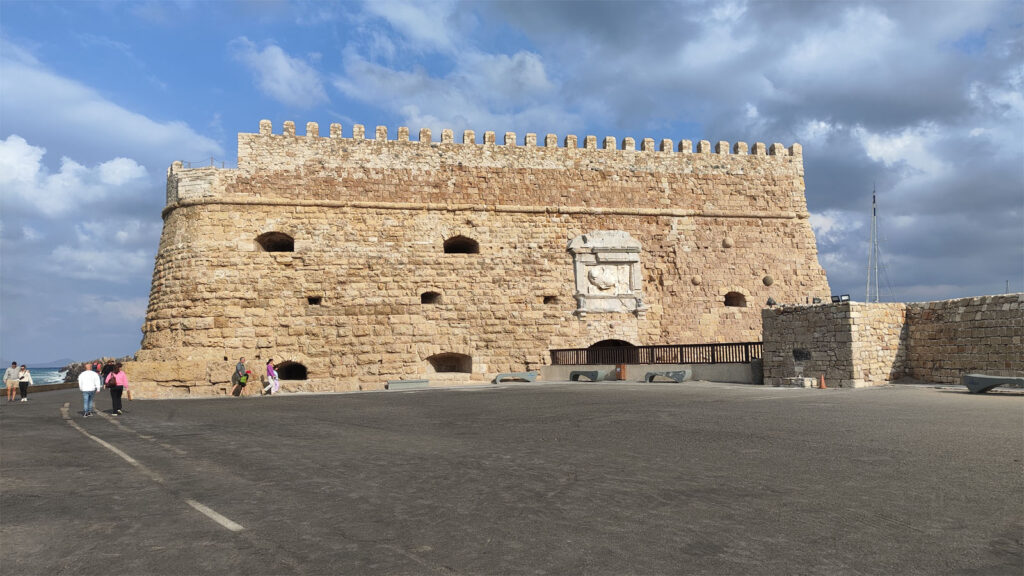
You can go inside—there’s a small museum, and the entrance fee is just €4. While there’s not much to see inside the halls, your ticket grants access to the rooftop, which offers the best panoramic views of the port and beyond. Highly recommended.
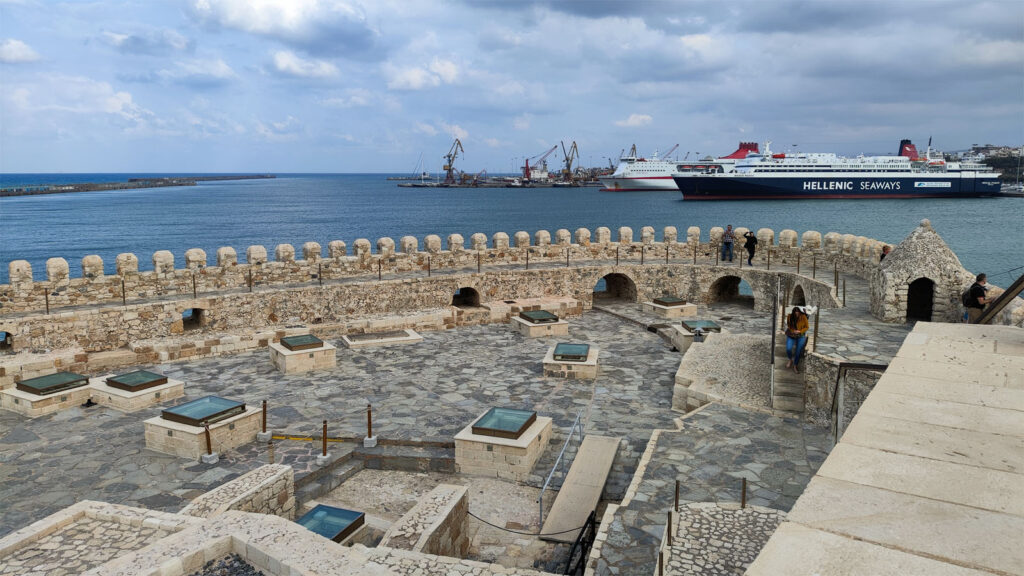
|
|
A bustling local market street in the center of Heraklion. You’ll find fresh produce, local delicacies, and authentic souvenirs here. It’s a great place to experience the everyday vibe of the city.
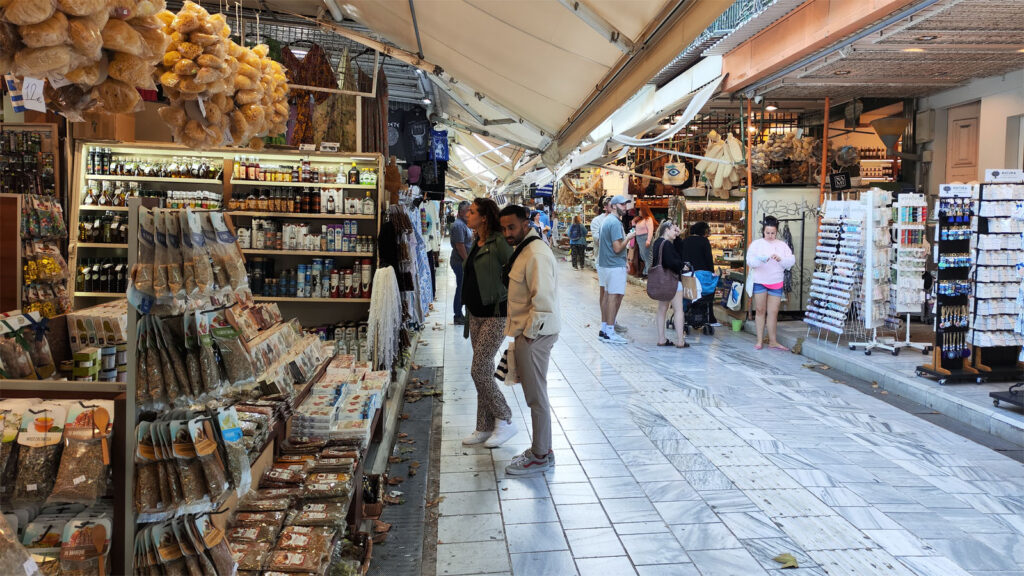
This elegant 17th-century Venetian fountain features carved lion figures and serves as a central meeting point in Heraklion’s historic core.
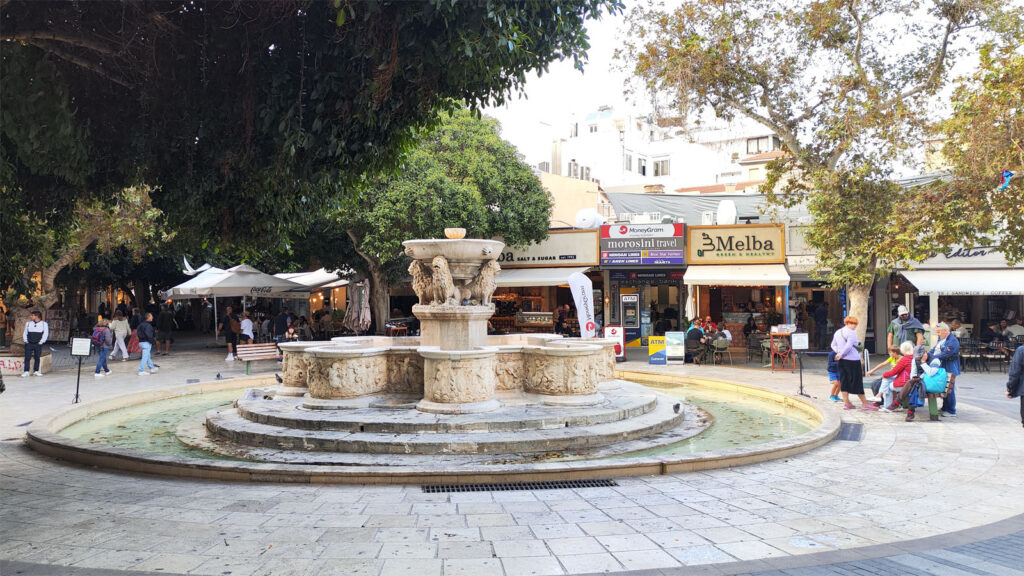
A scenic pedestrian street leading from the port into the heart of the city. Lined with neoclassical buildings, souvenir shops, and cozy cafés, it’s a pleasant and picturesque route into the old town.
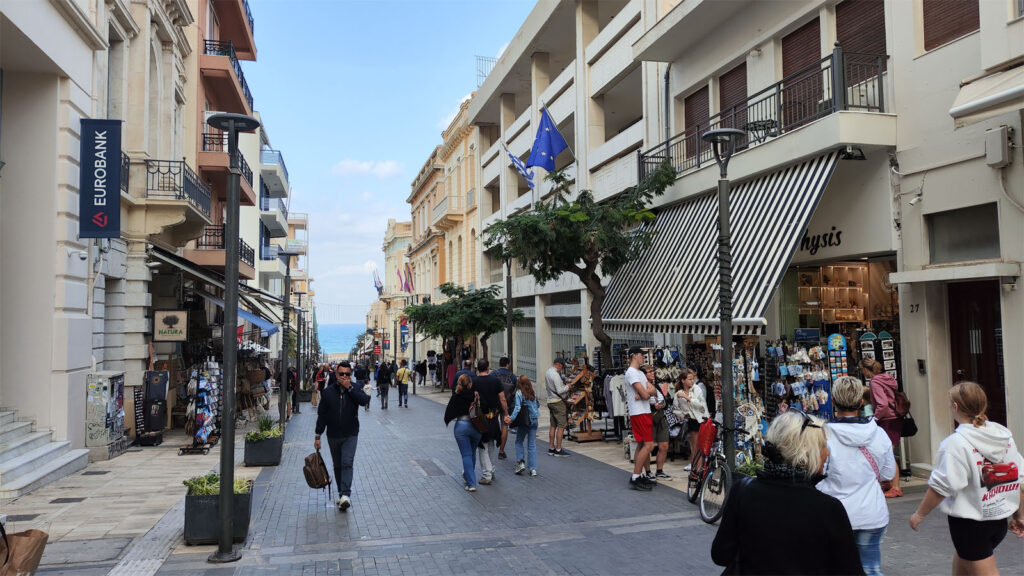
|
|
A historic church dedicated to the first bishop of Crete. Its architecture blends Byzantine, Venetian, and Ottoman influences, making it one of the city’s most unique landmarks.
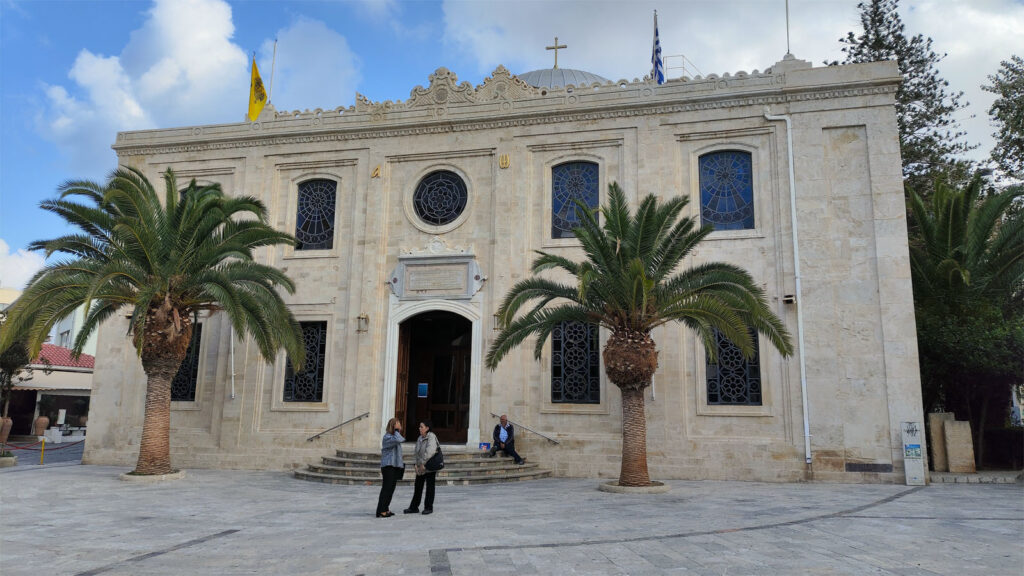
A beautiful building from the Venetian era that once hosted meetings of local nobility. Today, it houses Heraklion’s city hall.
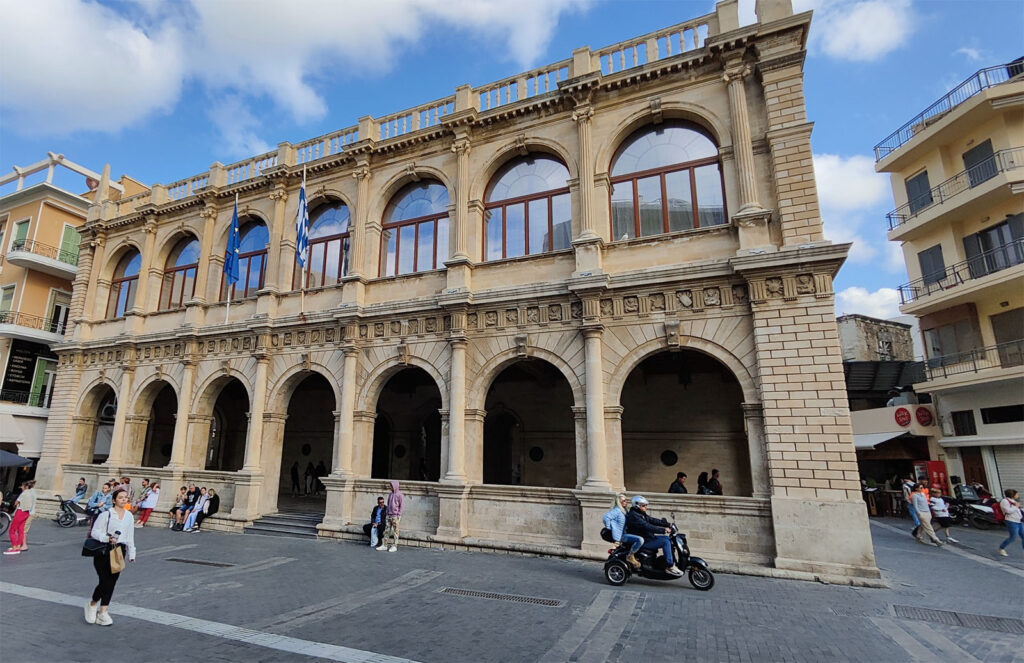
A charming harbor where modern yachts meet colorful fishing boats. It’s a perfect photo spot with a relaxed atmosphere.
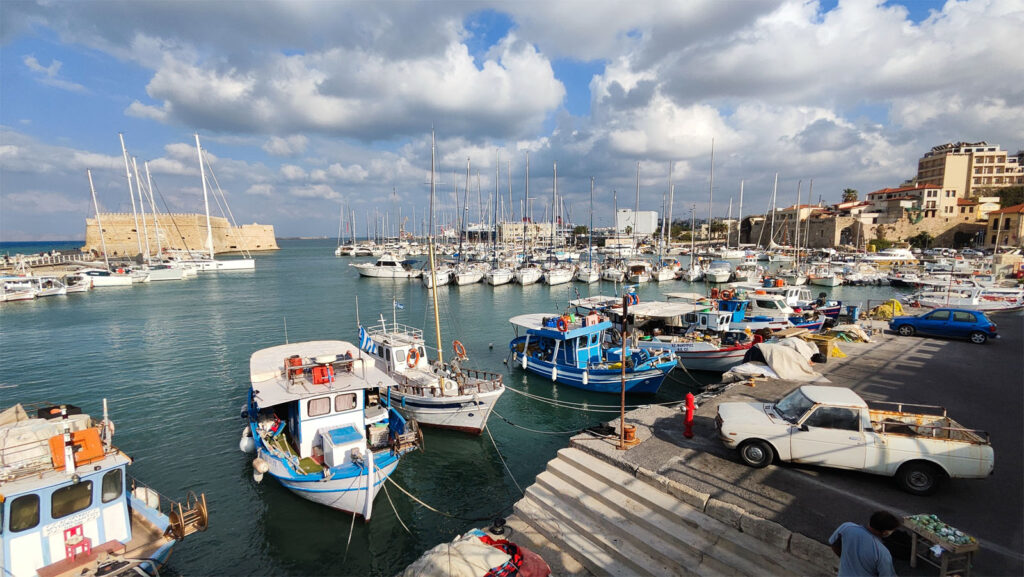
A long sea wall protecting the port from waves, popular with walkers and photographers. From here, you’ll get panoramic views of Koules Fortress, the Aegean Sea, and your cruise ship. You’ll also spot colorful graffiti along the way.
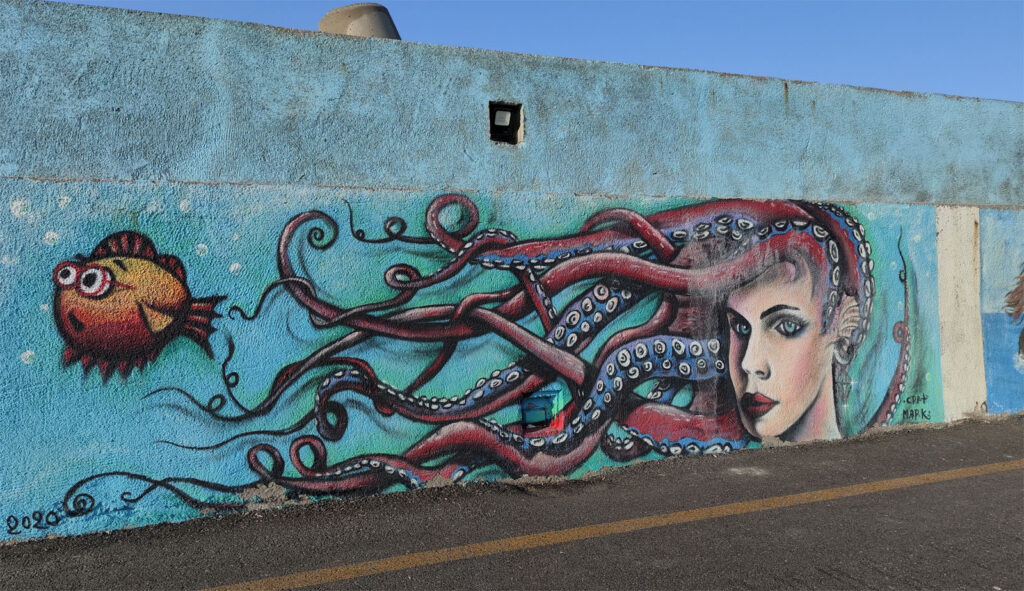
One of the most important archaeological sites in Greece, located just a few kilometers outside the city. Famous for its labyrinth-like layout and ancient frescoes, it’s a must for history buffs. I didn’t make it there this time, so I won’t include photos—but it’s well worth a visit if time allows.
Here’s what I managed to try during my stop in Heraklion:
A traditional Cretan dish where lamb is slow-cooked on a spit over an open fire. I had it at O,ti Thes — a no-frills, meat-heavy taverna with a bold and rustic vibe. The experience was definitely authentic, but I found the dish a bit too fatty for my taste. Interesting to try once, but I wouldn’t rush to order it again.
|
|
Greek street food is always a win: tasty, fast, and affordable. It’s a great way to grab a bite without heading back to the ship. I recommend two local favorites, both of which had a steady stream of customers—even in November:
Both spots serve fresh, satisfying gyros and other quick bites that are perfect for a casual, delicious lunch in town.
|
|
Local shops in Heraklion offer a wide variety of souvenirs that go beyond the typical tourist trinkets. Cretan olive oil is one of the most popular choices—renowned for its rich flavor and high quality. You’ll also find olives in all kinds of marinades, perfect for taking a taste of Crete home with you.
Local honey is another great pick, often sold in small jars ideal for gifts. Traditional ceramics and wooden crafts—like plates, bowls, and carved figurines—make for beautiful and authentic mementos.
And of course, don’t overlook Cretan wines and raki (a strong local spirit), which are perfect if you’re looking for something special to bring back for friends or family.
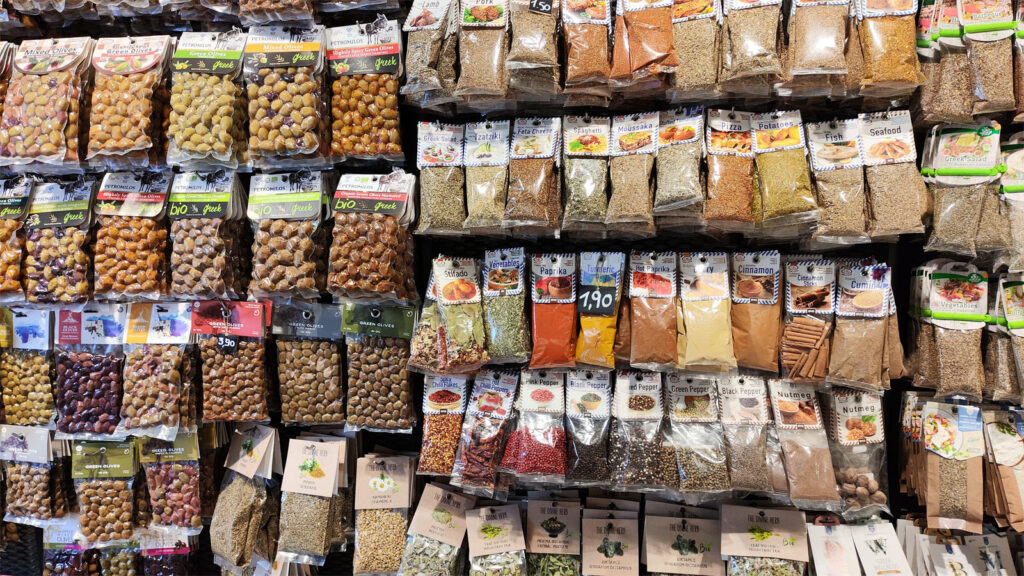
|
|
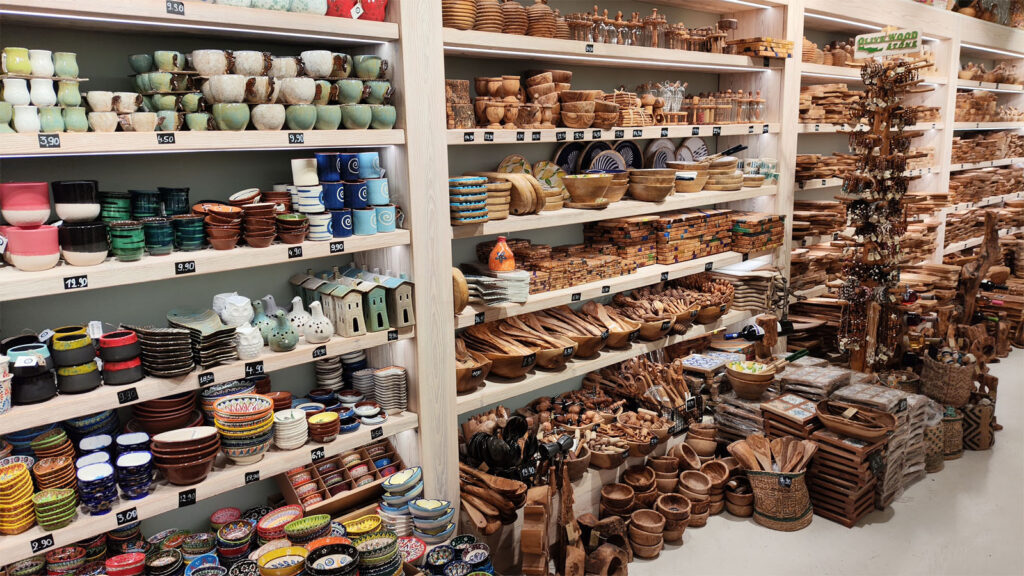
Heraklion is one of the most convenient embarkation ports in the Mediterranean, thanks to its airport being just a short distance from the city center.
My cruise started in Heraklion, and I arrived on a late-night flight. I took a taxi to my hotel, which cost €20. During the day, the fare might be even lower.
There are also public buses from the airport to the city center—just check your route using Google Maps. The fare is around €2, and tickets can be purchased from a machine at the stop. However, buses do not run late at night, so be sure to plan accordingly if you arrive outside regular hours.
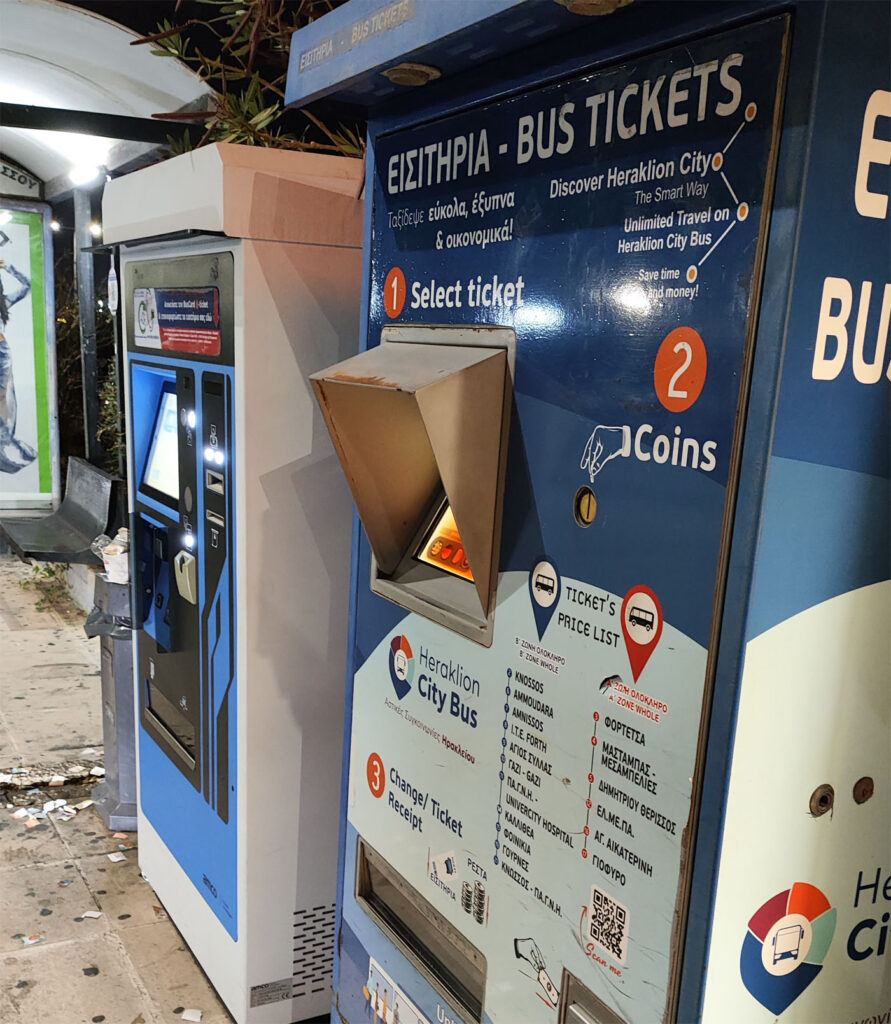
You might also like: